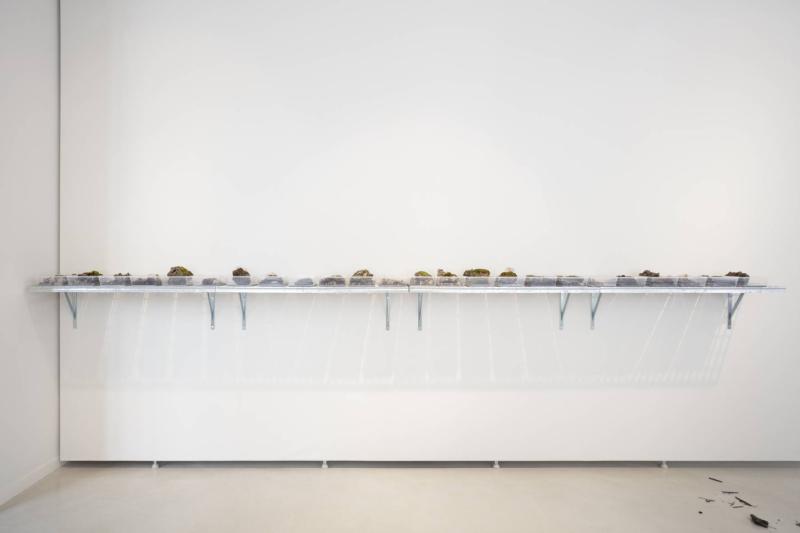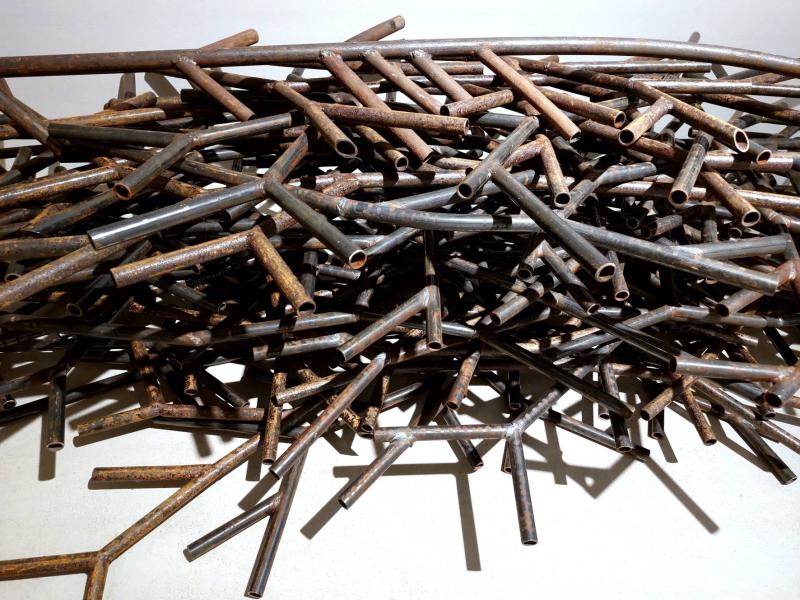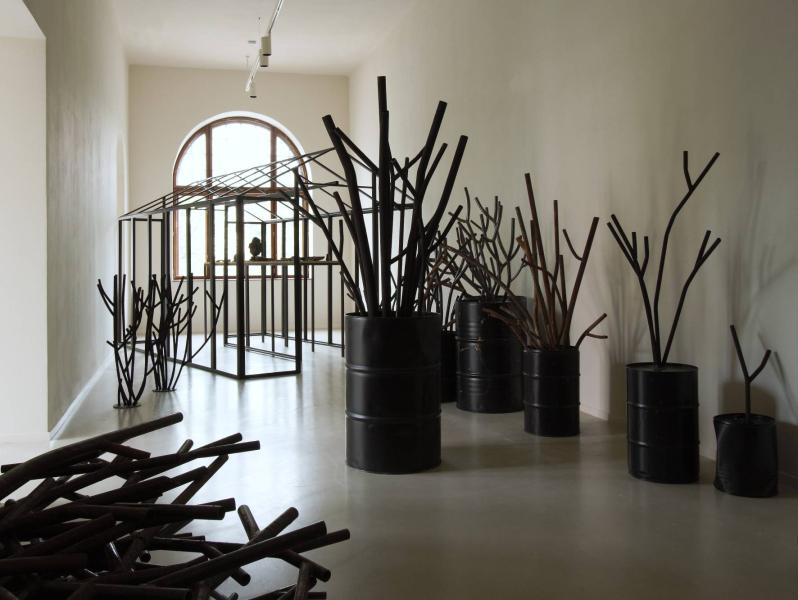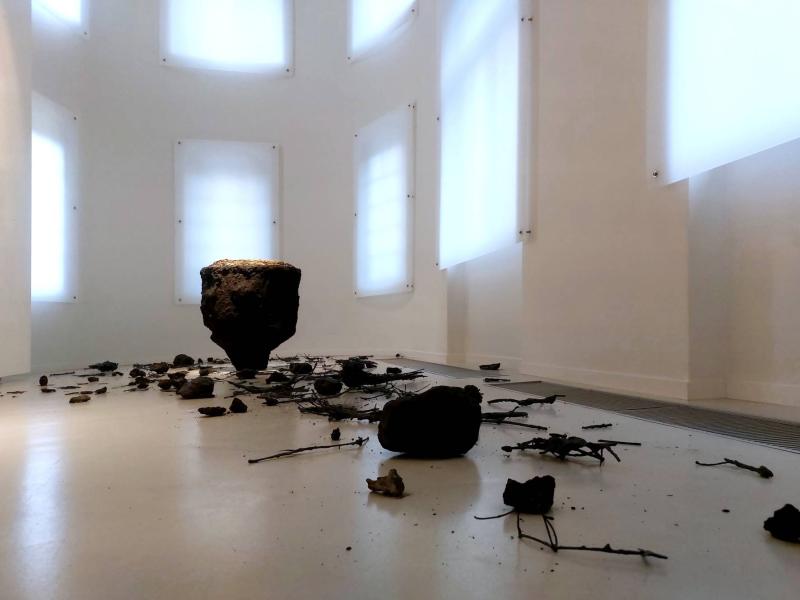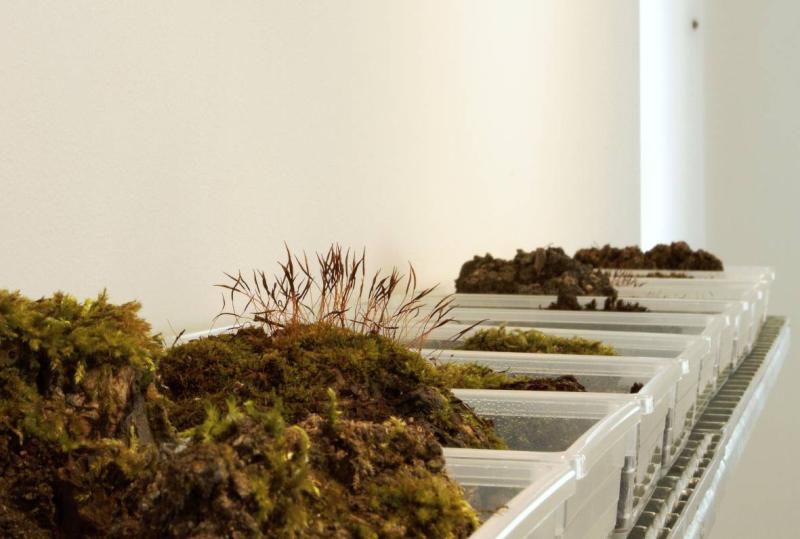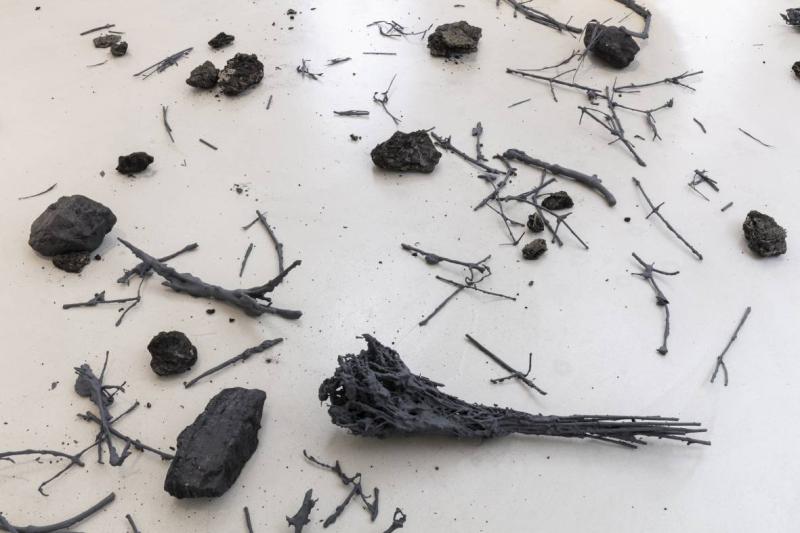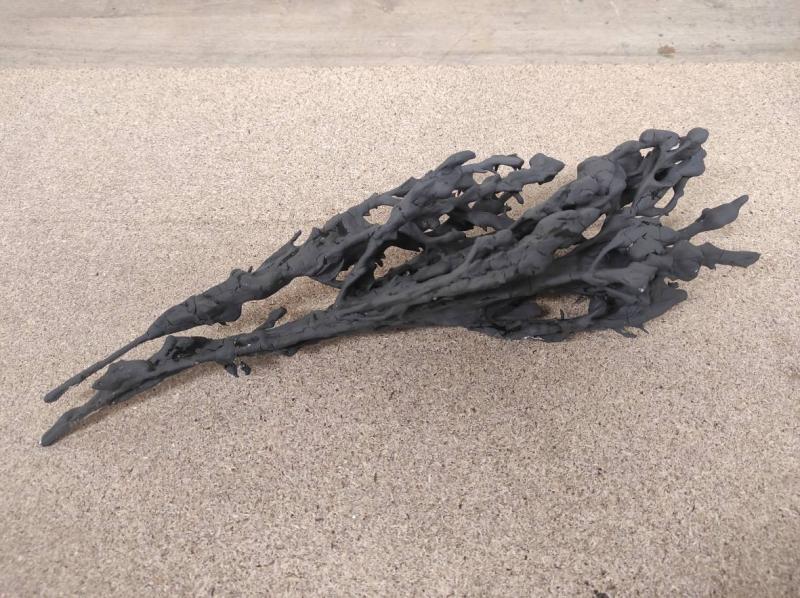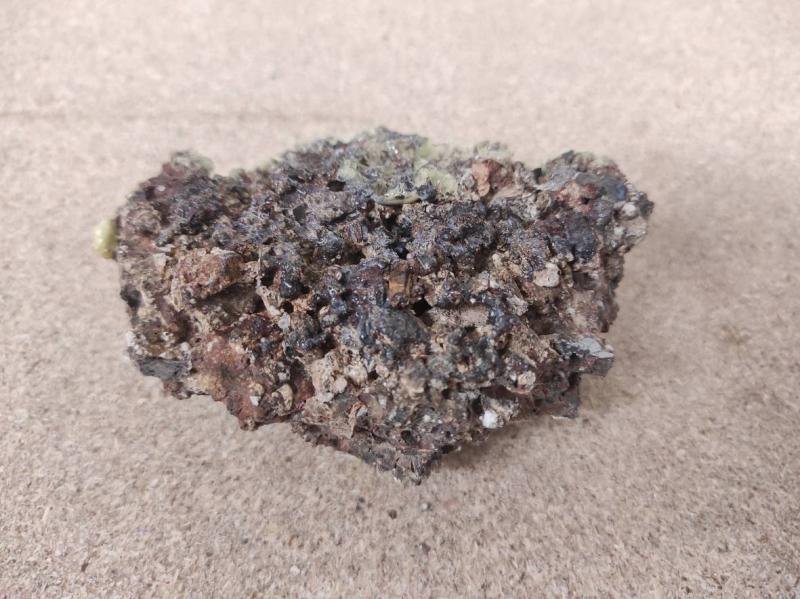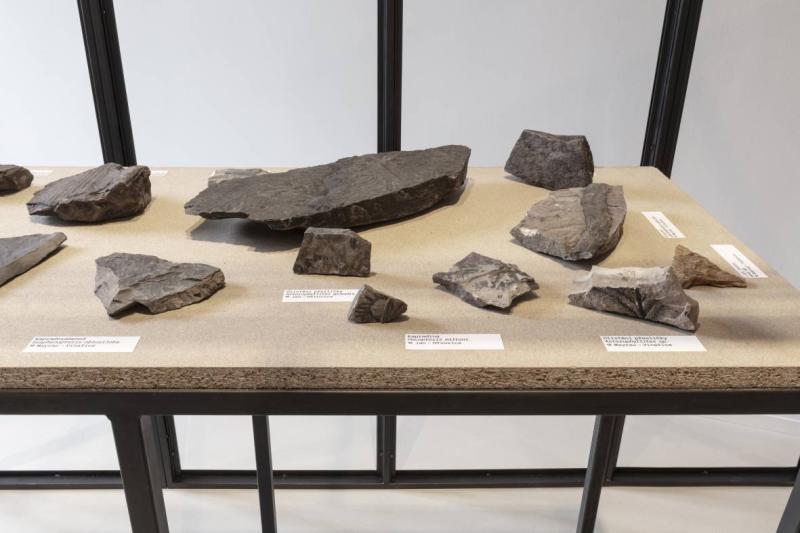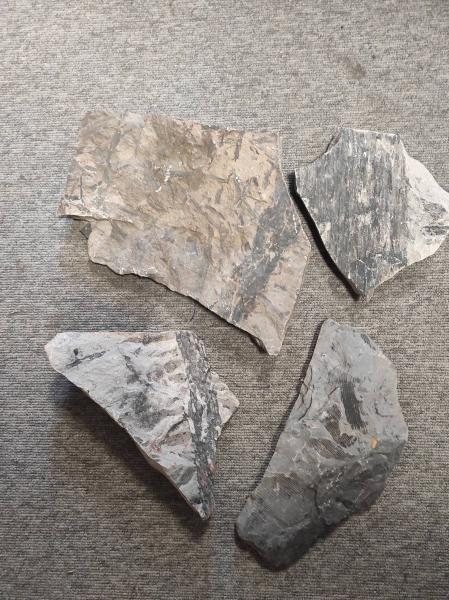It is no coincidence, then, that a significant part of her sculptural work is not only about the origin of the materials (ready-made - created out of waste) but also the apparent and powerful ‘recycling poetry’ of substances. Thus, in the landscape conglomerate, we see fragments of bodies resembling trees, stumps, or bush-like groupings. The metaphor representing living matter, fragility, and longevity contrasts the bleak, almost cold metallic materials. They evoke not only an environmental aspect of human behaviour but also point to the political era of industrial zones and compel us to ask: What is our relationship with nature and the surrounding landscape?
If we sharpen our gaze, we can see how everything is growing and getting a new tinge in places that we had pushed out of our view a long time ago. These peripheral spots are raising their attractiveness and peculiar beauty. We are witnessing regeneration as a driving force, proving that even in difficult, almost unrecoverable conditions, nature can find its inherent way to renew itself. Consequently, we gain much more—a home and refuge for countless fauna and flora organisms.
The exhibition Sometimes everything comes from afaris a reaction to the hyper-informed society that no longer knows the importance of the state of unawareness and the mystery that the world once offered. So let us look into the individual layers of coal piles in Dagmar Šubrtová's site-specific installation. For a moment, we can surrender our reasoning and open our hearts. In addition, as curious viewers, we can go directly to the places in question ourselves.
(Tea Záchová)

